Lexus LS400 2000, LS430 2000, LS460 2000, LS600H 2000 Owner Manual
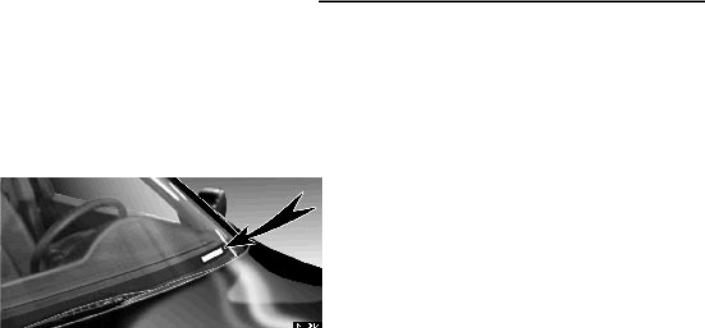
SECTION 6 ± 1
SERVICE PROCEDURES AND
SPECIFICATIONS
Introduction
Vehicle identification . . . . . . . . . . . . . . . . . . . . . . . . . . . 395
Engine compartment overview . . . . . . . . . . . . . . . . . . 398
Do±it±yourself service precautions . . . . . . . . . . . . . . 399
Parts and tools . . . . . . . . . . . . . . . . . . . . . . . . . . . . . . . 401
VEHICLE IDENTIFICATION
395
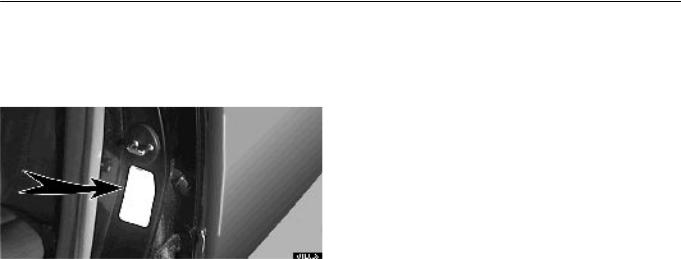
INTRODUCTION
The vehicle identification number (VIN) is the legal identifier for your vehicle. This number is on the left top of the instrument panel and can be seen through the windshield from outside.
This is the primary identification number for your Lexus. It is used in registering the ownership of your vehicle.
The vehicle identification number (VIN) is also on the Certification Label.
396

INTRODUCTION
The engine number is stamped on the engine block as shown.
397

INTRODUCTION
ENGINE COMPARTMENT OVERVIEW
1 Engine oil filler cap
2 Engine oil level dipstick
3 Brake fluid reservoir
4 Fuse box
5 Battery
6 Washer
fluid tank
7 Power steering fluid reservoir
8 Engine coolant reservoir
398

INTRODUCTION
DO±IT±YOURSELF SERVICE
PRECAUTIONS
If you perform maintenance yourself, be sure to follow the correct procedure given in this Section.
You should be aware that improper or incomplete servicing may result in operating problems.
Performing do±it±yourself maintenance during the warranty period may affect your warranty coverage. Read the separate Lexus Warranty statement for details and suggestions.
This Section gives instructions only for those items that are relatively easy for an owner to perform. As explained in Section 5, there are still a number of items that must be performed by a qualified technician with special tools.
For information on tools and parts for do±it±yourself maintenance, see ºParts and toolsº on page 401.
Utmost care should be taken when working on your vehicle to prevent accidental injury. Here are a few precautions that you should be especially careful to observe:
399
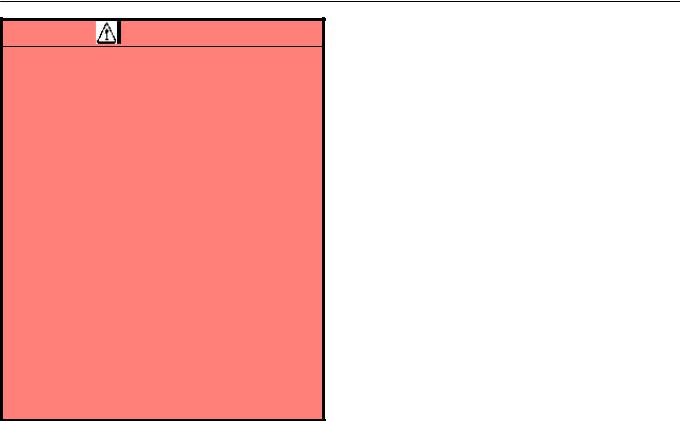
INTRODUCTION
CAUTION
When the engine is running, keep hands, clothing, and tools away from the moving fan and engine drive belt. (Removing rings, watches, and ties is advisable.)
Right after driving, the engine compartment ± the engine, radiator, exhaust manifold and power steering fluid reservoir, etc. ± will be hot. So be careful not to touch them. Oil and other fluids may also be hot.
Do not smoke, cause sparks or allow open flames around fuel or the battery. Their fumes are flammable.
Be extremely cautious when working on the battery. It contains poisonous and corrosive sulfuric acid.
Do not get under your vehicle with just the body jack supporting it. Always use automotive jack stands or other solid supports.
Be sure the ignition is off if you work near the electric cooling fan or radiator grille. With the ignition on, the electric cooling fan may automatically start to run if the air conditioning is on and/or if the coolant temperature is high.
Use eye protection whenever you work on or under your vehicle where you may be exposed to flying or falling material, fluid spray, etc.
400
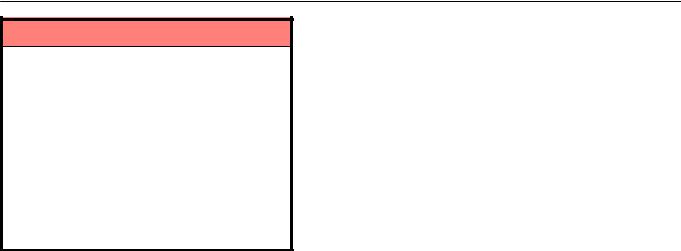
INTRODUCTION
NOTICE
Remember that battery and ignition cables carry high currents or voltages. Be careful of accidentally causing a short circuit.
Before closing the engine hood, check to see that you have not forgotten any tools, rags, etc.
Do not drive with the air cleaner removed, or excessive engine wear could result. Also backfiring could cause a fire in the engine compartment.
Do not overfill automatic transmission fluid, or the transmission could be damaged.
Be careful not to scratch the glass surface with the wiper frame.
PARTS AND TOOLS
Here is a list of parts and tools you will need to perform do±it±yourself maintenance. Remember all Lexus parts are designed in metric sizes, so your tools must be metric.
Checking the engine oil level
Parts (if level is low):
Use API grade SJ, ºEnergy±Conservingº multigrade engine oil or ILSAC multigrade engine oil. For recommended oil viscosity, see page 416.
Tools:
Rag or paper towel
Funnel (only for adding oil)
Checking the engine coolant level
Parts (if level is low):
ªToyota Long Life Coolantº or equivalent
See ºChecking the engine coolant levelº on page 417 for instructions.
Demineralized or distilled water
Tools:
Funnel (only for adding coolant)
401

INTRODUCTION
Checking brake fluid
Parts (if level is low):
FMVSS No. 116 DOT 3 or SAE J1703 brake fluid
Tools:
Funnel (only for adding fluid)
Checking power steering fluid
Parts (if level is low):
Automatic transmission fluid DEXRON II or III
Checking and replacing the blade type fuses
Parts (if replacement is necessary):
Fuse with same amperage rating as original
Checking the cartridge type fuses
Parts (if replacement is necessary):
Genuine Lexus fuse or equivalent with same amperage rating as original
Tools:
Rag or paper towel
Funnel (only for adding fluid)
Checking battery condition
Tools:
Warm water
Baking soda
Grease
Conventional wrench (for terminal clamp bolts)
Adding washer fluid
Parts:
Water
Washer fluid containing antifreeze (for winter use)
Tools:
Funnel
402

SECTION 6 ± 5
SERVICE PROCEDURES AND
SPECIFICATIONS
Body
Specifications . . . . . . . . . . . . . . . . . . . . . . . . . . . . . . . . 476 Protecting your vehicle from corrosion . . . . . . . . . . . 477 Washing and waxing . . . . . . . . . . . . . . . . . . . . . . . . . . 479 Cleaning the interior . . . . . . . . . . . . . . . . . . . . . . . . . . . 481
475

BODY
SPECIFICATIONS
± DIMENSIONS AND WEIGHT
Overall length |
4995 mm (196.7 in.) |
Overall width |
1830 mm (72.0 in.) |
Overall height |
1435 mm (56.5 in.)* |
Wheelbase |
2850 mm (112.2 in.) |
Tread ± Front |
1575 mm (62.0 in.) |
± Rear |
1575 mm (62.0 in.) |
Vehicle capacity weight (occupants + luggage) |
410 kg (900 lb.) |
|
|
*Unladen vehicle |
|
± FUEL TANK |
|
|
|
Capacity |
83 L (21.9 gal., 18.3 lmp.gal.) |
|
|
476

PROTECTING YOUR VEHICLE
FROM CORROSION
Proper care of your Lexus can help ensure long±term corrosion prevention.
The most common causes of corrosion to your vehicle are:
The accumulation of road salt, dirt and moisture in hard±to±reach areas under the vehicle.
Chipping of paint or undercoating caused by minor accidents or by stones and gravel.
The following conditions will cause or accelerate corrosion of your vehicle, so it is important to keep your vehicle, particularly the underside, as clean as possible and to repair any damage to paint or protective coatings as soon as possible.
The presence of road salt or dust control chemicals, salt in the air near the sea coast, industrial air pollution.
High humidity, especially at temperatures just above freezing point.
Certain parts of your vehicle are wet or damp for an extended period of time, even though other parts of the vehicle are dry.
Components of the vehicle which are prevented from quick±drying due to lack of proper ventilation are
exposed to high ambient temperature.
BODY
477

BODY
To help prevent corrosion on your Lexus, follow these guidelines:
Keep your vehicle clean by regular washing. In addition, observe the following points.
If you drive on salted roads in the winter or if you live near the ocean, you should hose off the undercarriage at least once a month to minimize corrosion.
High pressure water or steam is effective for cleaning the vehicle's underside and wheel housings. Pay particular attention to these areas as it is difficult to see all the mud and dirt. It will do more harm than good to simply wet the mud and debris without removing them. The lower edge of doors, rocker panels and frame members have drain holes which should not be allowed to clog with dirt as trapped water in these areas can cause corrosion.
Wash the underside of the vehicle thoroughly when winter is over.
See ºWashing and waxingº on page 479 for more tips.
Check the condition of your vehicle's paint and trim.
If you find any chips or scratches in the paint, touch them up immediately to prevent corrosion from starting. If the chips or scratches have gone through the bare metal, have a qualified body shop make the repair.
Check the interior of your vehicle. Water and dirt can accumulate under the floor mats and could cause corrosion. Occasionally check under the mats to make sure the area is dry. Be particularly careful when transporting chemicals, cleansers, fertilizers, salt, etc. These should be transported in proper containers. If a spill or leak should occur, immediately clean and dry the area.
Keep your vehicle in a well ventilated garage or a roofed place. Do not park your vehicle in a damp, poorly ventilated garage. If you wash your vehicle in the garage, or if you drive it in covered with water or snow, your garage may be so damp it will cause corrosion. Even if your garage is heated, a wet vehicle can corrode if the ventilation is poor.
478

BODY
WASHING AND WAXING
Washing your Lexus
Keep your vehicle clean by regular washing.
The following cases may cause weakness to the paint or corrosion to the body and parts. Wash your vehicle as soon as possible.
When driving in a coastal area
When driving on a road sprinkled with antifreeze
When having stuck of coal tar, tree sap, bird droppings and carcass of an insect
When driving in the areas where there is a lot of smoke, soot, dust, iron dust and chemical substance
When the vehicle becomes remarkably dirty with dust and mud
Hand±washing your Lexus
Work in the shade and wait until the vehicle body is not hot to the touch.
1.Rinse off loose dirt with a hose. Remove any mud or road salt from the underside of the vehicle or in the wheel wells.
2.Wash with a mild car±wash soap, mixed according to the manufacturer's instructions. Use a soft cotton mitt and keep it wet by dipping it frequently into the wash water. Do not rub hard ± let the soap and water remove the dirt.
479
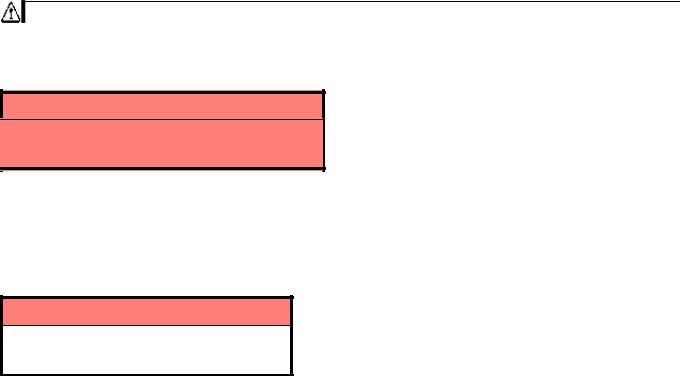
BODY
Plastic wheel ornaments: The plastic wheel ornaments are damaged easily by organic substances. If any organic substance splashes an ornament, be sure to wash it off with water and check if the ornament is damaged.
CAUTION
Do not attach the heavily damaged plastic wheel ornament. It may fly off the wheel and cause accidents while the vehicle is moving.
Aluminum wheels: Use only a mild soap or neutral detergent.
Urethane bumpers and side moldings: Wash carefully. Do not scrub with abrasive cleaners. The bumper and side molding faces are soft.
Road tar: Remove with turpentine or cleaners that are marked safe for painted surfaces.
NOTICE
Do not use organic substances (gasoline, kerosene, benzine or strong solvents), which may be toxic or cause damage.
3. Rinse thoroughly ± dried soap can cause streaking. In hot weather you may need to rinse each section right after you wash it.
4. To prevent water spots, dry the vehicle using a clean soft cotton towel. Do not rub or press hard ± you might scratch the paint.
Automatic car wash
Your vehicle may be washed in an automatic car wash, but remember that the paint can be scratched by some type of brushes, unfiltered washing water, or the washing process itself. Scratching reduces paint durability and gloss, especially on darker colors. The manager of the car wash should be able to advise you whether the process is safe for the paint on your vehicle.
480
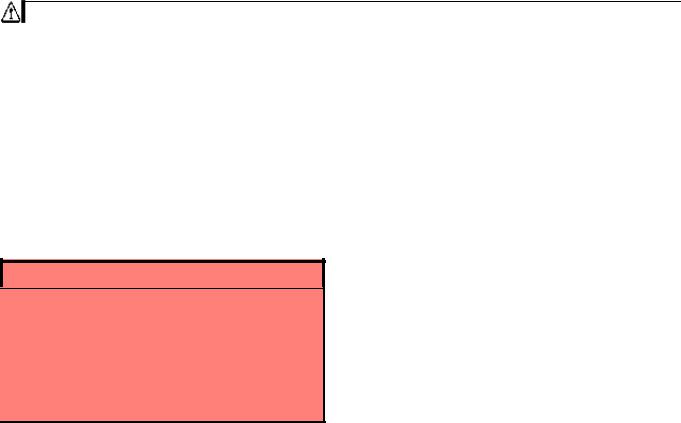
BODY
Waxing your Lexus |
CLEANING THE INTERIOR |
Polishing and waxing is recommended to maintain the original beauty of your Lexus' finish.
Once a month or if the vehicle surface does not repel water well, apply wax.
1.Always wash and dry the vehicle before you begin waxing, even if you are using a combined cleaner and wax.
2.Use a good quality polish and wax. If the finish has become extremely weathered, use a car±cleaning polish, followed by a separate wax. Carefully follow the manufacturer's instructions and precautions. Be sure to polish and wax the chrome trim as well as the paint.
3.Wax the vehicle again when water does not bead but remains on the surface in large patches.
CAUTION
Be careful not to splash water or spill liquid on the floor. This may prevent the side airbags from activating correctly, resulting in serious injury.
Do not wash the vehicle floor with water, or allow water to get onto the floor when cleaning the vehicle interior or exterior. Water may get into audio components or other electrical components above or under the floor carpet (or mat) and cause a malfunction; and it may cause body corrosion.
481

BODY
Leather Interior
The selected leather is used in your Lexus. Due to a leather product, some parts of leather may be rough, uneven or scratched originally.
To keep good appearance, we recommend you to clean it periodically twice a year.
Remove dirt on the leather in the following ways:
1.Wipe it off lightly using a soft cloth (e.g. gauze) dampened with 5% solution of neutral detergent for wool.
2.Wring water from a clean cloth and thoroughly wipe off all traces of detergent with it.
3. Wipe off the surface of the leather with a dry soft cloth. Allow the leather to dry in a ventilated shaded area. Excess of wet may cause the hardening or shrinking of the leather.
NOTICE
482
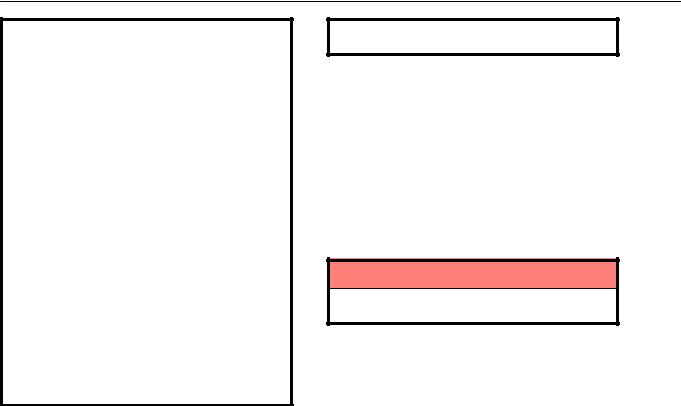
BODY
Dirt or sand adhered to the leather may damage the treated surface and cause it to wear earlier. Remove dirt or sand using a vacuum cleaner.
If a stain should fail to come out with a neutral detergent, apply a cleaner that does not contain an organic solvent.
Never use organic substances such as benzine, alcohol or gasoline, or alkaline or acid solutions for cleaning the leather as these could cause discoloring.
Use of a nylon brush or synthetic fiber cloth, etc. may scratch the fine grained surface of the leather.
Mildew may develop on soiled leather upholstery. Be especially careful to avoid oil spots. Try to keep your upholstery always clean.
Long exposure to direct sunlight may cause the leather surface to harden and shrink. Keep your vehicle in a shaded area, especially in the summer.
The interior of your vehicle is apt to heat up on hot summer days, so avoid placing on the upholstery items made of vinyl or plastic or containing wax as these tend to stick to leather when warm.
Improper cleaning of the leather upholstery could result in discoloration or staining.
Synthetic Leather Areas (Dash and sun visors)
The synthetic leather areas may be easily cleaned with a mild soap or detergent and water.
First vacuum over the upholstery to remove loose dirt. Then, using a sponge or soft cloth, apply the soap solution to the synthetic leather. After allowing it to soak in for a few minutes to loosen the dirt, remove the dirt and wipe off the soap with a clean damp cloth. If all the dirt does not come off, repeat the procedure. Commercial foaming±type cleaners are also available which work well. Follow the manufacturer's instructions.
NOTICE
Do not use solvent, thinner, gasoline or window cleaner on the interior.
Carpets, Windows and Seat Belts
Begin by vacuuming thoroughly to remove as much dirt as possible. Several types of foam cleaners are available; some are in aerosol cans and others are powders or liquids which you mix with water to produce a foam. To shampoo the carpets, use a sponge or brush
483
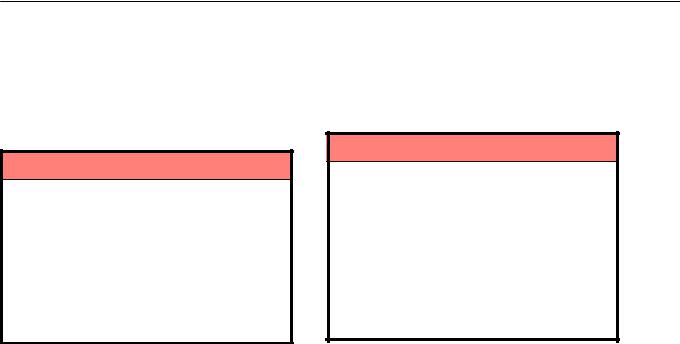
BODY
to apply the foam. Rub in overlapping circles. Do not apply water ± the best results are obtained by keeping the carpet as dry as possible. Read the shampoo instructions and follow them closely.
The seat belts may be cleaned with mild soap and water or with lukewarm water.
Use a cloth or sponge. As you are cleaning, check the belts for excessive wear, fraying or cuts.
NOTICE
Use a good foam±type shampoo to clean the carpets.
Do not use dye or bleach on the belts ± it may weaken them.
Do not use the belts until they become dry.
The windows may be cleaned with any household window cleaner.
When cleaning the inside of the rear window, be careful not to scratch or damage the heater wires.
Air Conditioning Control Panel, Car
Audio, Instrument Panel, Console Panel,
and Switches
Use a soft damp cloth for cleaning.
Soak a clean soft cloth in water or lukewarm water then lightly wipe off any dirt.
NOTICE
Do not use organic substances (solvents, kerosene, alcohol, gasoline, etc.) or alkaline or acidic solutions. These chemicals can cause discoloring, staining or peeling of the surface.
If you use cleaners or polishing agents, make sure their ingredients do not include the substances mentioned above.
If you use a liquid car freshener, do not spill the liquid onto the vehicle's interior surfaces. It may contain the ingredients mentioned above. Immediately clean any spill using the method mentioned above.
If you have any questions about the cleaning of your Lexus, your local Lexus dealer will be pleased to answer them.
484

REPORTING SAFETY DEFECTS
FOR U.S. OWNERS
If you believe that your vehicle has a defect which could cause a crash or could cause injury or death, you should immediately inform the National Highway Traffic Safety Administration (NHTSA) in addition to notifying Toyota Motor Sales, U.S.A., Inc. (Toll±free: 1±800±25±LEXUS).
If NHTSA receives similar complaints, it may open an investigation, and if it finds that a safety defect exists in a group of vehicles, it may order a recall and remedy campaign. However, NHTSA cannot become involved in individual problems between you, your dealer, or Toyota Motor Sales, U.S.A., Inc.
To contact NHTSA, you may either call the Auto Safety Hotline toll±free at
SECTION 7
REPORTING SAFETY DEFECTS
FOR U.S. OWNERS
Reporting safety defects for U.S. owners . . . . . . . . . 485
1±800±424±9393 (or 366±0123 in Washington.D.C. area) or write to: NHTSA, U.S. Department of Transportation, Washington. D.C. 20590. You can also obtain other information about motor vehicle safety from the Hotline.
485

SECTION 6 ± 4
SERVICE PROCEDURES AND
SPECIFICATIONS
Electrical components
Specifications . . . . . . . . . . . . . . . . . . . . . . . . . . . . . . . . 444
Checking battery condition . . . . . . . . . . . . . . . . . . . . . 453
Battery recharging precautions . . . . . . . . . . . . . . . . . 457
Checking and replacing the blade type fuses . . . . . 458
Checking the cartridge type fuses . . . . . . . . . . . . . . . 463
Adding washer fluid . . . . . . . . . . . . . . . . . . . . . . . . . . . 464
Checking the headlight aim . . . . . . . . . . . . . . . . . . . . . 465
Replacing light bulbs . . . . . . . . . . . . . . . . . . . . . . . . . . 468
SPECIFICATIONS
± FUSE LOCATIONS
444
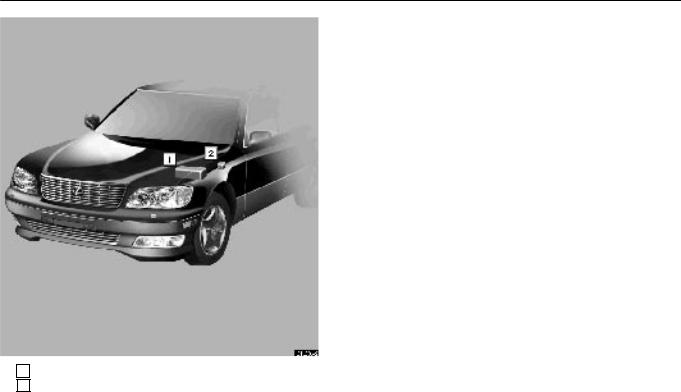
ELECTRICAL COMPONENTS
1 Engine compartment
2 Driver's side instrument panel
± FUSES
445

ELECTRICAL COMPONENTS
Driver's side instrument panel
446
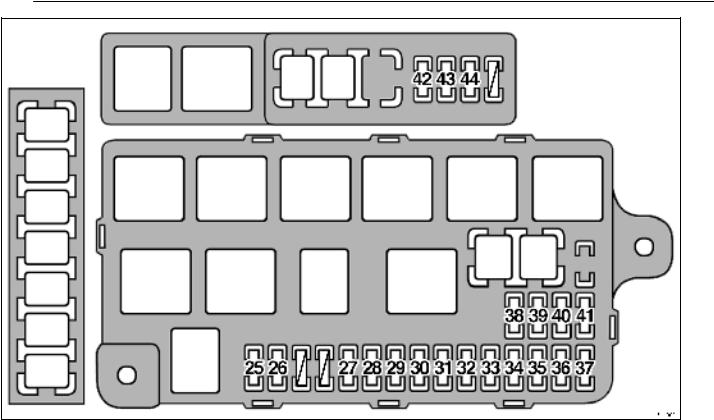
ELECTRICAL COMPONENTS
447

ELECTRICAL COMPONENTS
Engine compartment
448

ELECTRICAL COMPONENTS
No. |
FUSE |
AMPERE |
CIRCUIT |
|
|
|
|
|
|
1 |
TURN |
7.5 |
Turn signal lights |
|
|
|
|
|
|
2 |
WIPER |
20 |
Windshield wipers |
|
|
|
|
|
|
|
|
|
Air conditioning system, |
|
3 |
HEATER |
10 |
Rear window defogger, |
|
Multiport fuel injection |
||||
|
|
|
system/sequential multiport fuel |
|
|
|
|
injection system |
|
|
|
|
|
|
4 |
FR FOG |
15 |
Fog lights |
|
|
|
|
|
|
|
|
|
Power steering control system, |
|
5 |
ECU±IG |
10 |
Charging system, |
|
|
|
|
Vehicle skid control system |
|
|
|
|
|
|
|
|
|
Automatic headlight leveling |
|
|
|
|
system, Moon roof, |
|
6 |
PWR±IG |
15 |
Headlight cleaner, |
|
Power seat switch, |
||||
|
|
|
||
|
|
|
Tilt and telescopic steering, |
|
|
|
|
Shift lock system |
|
|
|
|
|
|
|
|
|
Gauges and meters, service |
|
|
|
|
reminder indicators and |
|
|
|
|
warning buzzers, |
|
|
|
|
Back±up lights, |
|
7 |
GAUGE |
10 |
Vehicle skid control system, |
|
|
|
|
Multiport fuel injection |
|
|
|
|
system/sequential multiport fuel |
|
|
|
|
injection system, Automatic |
|
|
|
|
transmission system |
|
|
|
|
|
|
|
|
|
SRS, Multiport fuel injection |
|
8 |
IGN |
10 |
system/sequential multiport fuel |
|
|
|
|
injection system |
|
|
|
|
|
449

ELECTRICAL COMPONENTS
9 |
RR FOG |
7.5 |
No circuit |
|
|
|
|
|
|
10 |
FUEL OPN |
10 |
Fuel opener system |
|
|
|
|
|
|
No. |
FUSE |
AMPERE |
CIRCUIT |
|
|
|
|
|
|
11 |
RR CIG |
15 |
Rear cigarette lighter, |
|
Power outlet |
||||
|
|
|
||
|
|
|
|
|
12 |
FR CIG |
15 |
Front cigarette lighter, SRS |
|
|
|
|
|
|
13 |
A/C |
7.5 |
Air conditioning system |
|
|
|
|
|
|
14 |
P RR |
20 |
Rear door lock, |
|
DOOR |
Rear power window |
|||
|
|
|||
|
|
|
|
|
15 |
STOP LP |
25 |
Stop lights, |
|
High mounted stop light |
||||
|
|
|
||
|
|
|
|
|
|
RADIO |
|
Audio system, |
|
16 |
15 |
Outside rear view mirror, |
||
NO.2 |
Shift lock system, |
|||
|
|
|||
|
|
|
Air conditioning system |
|
|
|
|
|
|
|
|
|
Instrument panel lights, |
|
17 |
PANEL |
7.5 |
Air conditioning system, Glove |
|
|
|
|
box light, Audio system |
|
|
|
|
|
|
|
|
|
Starting system, |
|
18 |
STARTER |
7.5 |
Automatic transmission system, |
|
Multiport fuel injection |
||||
|
|
|
system/sequential multiport fuel |
|
|
|
|
injection system |
|
|
|
|
|
|
19 |
TAIL |
7.5 |
Tail lights, Side marker lights, |
|
License plate lights |
||||
|
|
|
||
|
|
|
|
450

ELECTRICAL COMPONENTS
|
|
|
Shift lock system, |
|
20 |
STOP±S |
7.5 |
Height control system, |
|
Anti±lock brake system, |
||||
|
|
|
||
|
|
|
Vehicle skid control system |
|
|
|
|
|
|
21 |
RR S/HTR |
15 |
No circuit |
|
|
|
|
|
|
22 |
WASHER |
20 |
Windshield washer |
|
|
|
|
|
|
No. |
FUSE |
AMPERE |
CIRCUIT |
|
|
|
|
|
|
23 |
AIR SUS |
20 |
Height control system |
|
|
|
|
|
|
24 |
D RR |
20 |
Rear door lock, |
|
DOOR |
Rear power window |
|||
|
|
|||
|
|
|
|
|
25 |
HORN |
10 |
Horns |
|
|
|
|
|
|
26 |
ETCS |
15 |
Electronic throttle control |
|
system |
||||
|
|
|
||
|
|
|
|
|
27 |
H±LP L |
10 |
Left±hand headlight (high |
|
UPR |
beam) |
|||
|
|
|||
|
|
|
|
|
28 |
H±LP R |
10 |
Right±hand headlight (high |
|
UPR |
beam) |
|||
|
|
|||
|
|
|
|
|
29 |
EFI NO.2 |
10 |
Emission control system |
|
|
|
|
|
|
30 |
MIR±HTR |
15 |
Outside rear view mirror |
|
defogger |
||||
|
|
|
||
|
|
|
|
|
31 |
FR S/HTR |
15 |
Seat heater |
|
|
|
|
|
|
32 |
ALT±S |
7.5 |
Charging system |
|
|
|
|
|
|
33 |
TEL |
15 |
Telephone |
|
|
|
|
|
|
34 |
CRT |
15 |
Multi information display |
|
|
|
|
|
451

ELECTRICAL COMPONENTS
35 |
RADIO |
20 |
Audio system |
|
NO.1 |
|
|||
|
|
|
||
|
|
|
|
|
36 |
MPX±B |
10 |
Power window, Door lock, |
|
Tilt and telescopic steering |
||||
|
|
|
||
|
|
|
|
|
37 |
ECU±B |
7.5 |
Vehicle skid control system, |
|
Daytime running light system |
||||
|
|
|
||
|
|
|
|
|
38 |
HAZ |
10 |
Emergency flashers |
|
|
|
|
|
|
No. |
FUSE |
AMPERE |
CIRCUIT |
|
|
|
|
|
|
|
|
|
Multiport fuel injection |
|
39 |
EFI NO.1 |
20 |
system/sequential multiport fuel |
|
|
|
|
injection system |
|
|
|
|
|
|
|
|
|
Interior light, Vanity lights, |
|
40 |
DOME |
10 |
Foot lights, Rear personal light, |
|
|
|
|
Garage door opener |
|
|
|
|
|
|
41 |
OBD |
7.5 |
On±board diagnosis system |
|
|
|
|
|
|
42 |
DRL |
10 |
Daytime running light system |
|
|
|
|
|
|
43 |
H±LP R |
15 |
Right±hand headlight (low |
|
LWR |
beam) |
|||
|
|
|||
|
|
|
|
|
44 |
H±LP L |
15 |
Left±hand headlight (low beam) |
|
LWR |
|
|||
|
|
|
||
|
|
|
|
452

ELECTRICAL COMPONENTS
CHECKING BATTERY
CONDITION
Precautions
453
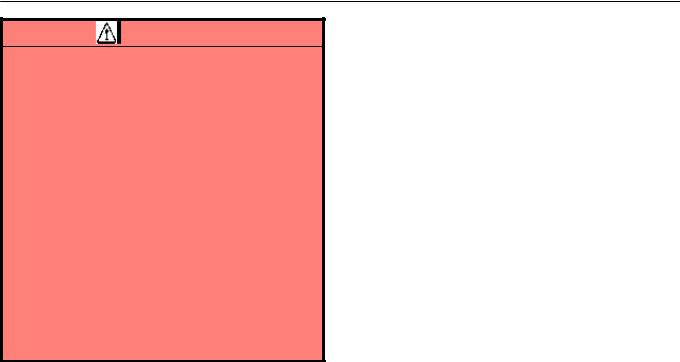
ELECTRICAL COMPONENTS
CAUTION
BATTERY PRECAUTIONS
The battery produces flammable and explosive hydrogen gas.
Do not cause a spark by contacting the battery terminals with tools.
Do not smoke or light a match near the battery.
The electrolyte contains poisonous and corrosive sulfuric acid.
Avoid contact with eyes, skin or clothes.
Never inhale or swallow electrolyte.
Wear protective safety glasses when working near the battery.
Keep children away from the battery.
EMERGENCY MEASURES
If electrolyte gets in your eyes, flush your eyes with clean water for at least 15 minutes and get immediate medical attention. If possible, continue to apply water with a sponge or cloth while traveling to the medical office.
454
